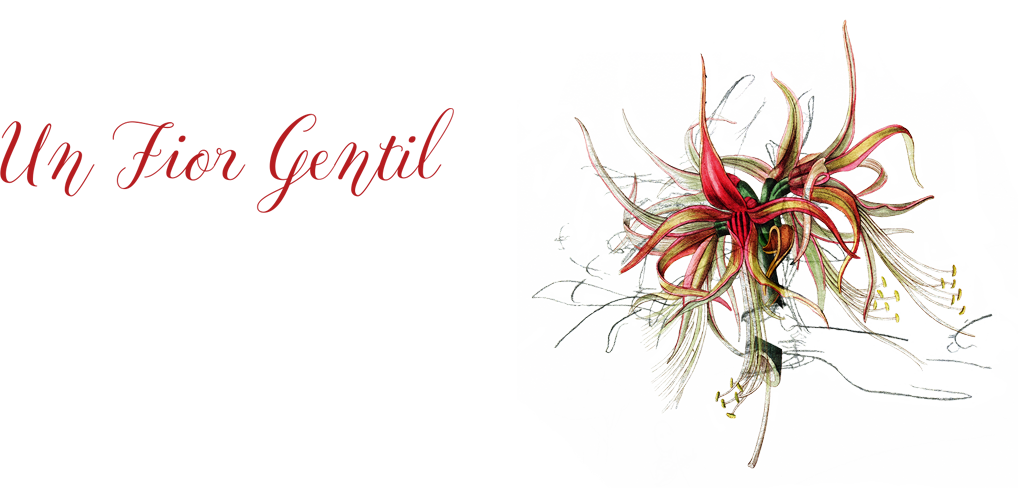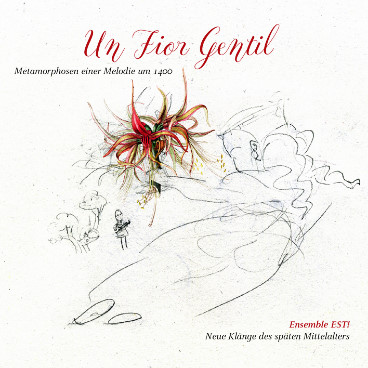About the project
BY PETER NEUBÄCKER
The project Un Fior Gentil has a long and unusual history that is closely connected with the music editing software Melodyne. When I was developing this software in the late nineties, I had a vision of an entirely new way of handling recorded music: until then, the recording of a piece of music was the last step of the musical process – admittedly, you could still, if need be, do some editing or simple sound processing, but you could no longer reshape the music in the sense of changing its musical composition; once recorded, the music was, so to speak, "frozen".
Once recorded, the music was, so to speak, "frozen". With Melodyne, you can thaw it out
With Melodyne, you can thaw it out: melodies are analyzed, and all the notes – including the finest details of phrasing – are displayed; the user can then "grasp" and manipulate them with complete freedom, altering their pitch, duration or tone color as well as reordering them. The recorded music becomes something more akin to play-dough or the components of a construction set that can be remolded and restructured, and the creative work of composing and arranging can continue after the recording phase is over.

Peter Neubäcker
In 2000, shortly before Melodyne was released, we had the idea of recording a considerable amount of music as a "test project", so as to have material at our disposition with which to test the functionality of the software, and produce an entire album exploiting to the full the creative compositional possibilities of the new way of working with music.
By a happy coincidence, our friend Walter Waidosch was immersed at the time in musicological research for an upcoming album, Un Fior Gentil, for his ensemble EST!, in which I had also played occasionally. When I told him about Melodyne and its musical possibilities, we decided to record the album in such a way that it could be edited afterwards with this new tool.
Certain conditions had to be fulfilled before the music could be edited in Melodyne: it was necessary, for instance, that each melodic "voice" (i.e., each vocal or instrumental part) be recorded on a separate track on which it alone could be heard, and that each recorded voice (in this sense) should be monophonic, because Melodyne – at that time, at least – was not suitable for polyphonic instruments. Walter duly arranged all the pieces on the album in such a way that these conditions could be met.
At the start of 2001, we went with the ensemble to Ulrich Kraus's recording studio at Wörthsee. The recording was a somewhat laborious affair: first, each piece was recorded "live" by the entire ensemble. Since it was necessary, however, to have each part on a separate track, this initial recording was not included in the final product; its sole purpose was to provide orientation to the various players, who could hear it in their headphones later as they recorded their individual parts, one by one.
Although this is standard practice in pop productions, classical musicians are not familiar with it at all, and they found it a great challenge.
Although this is standard practice in pop productions, classical musicians are not familiar with it at all, and they found it a great challenge. For the choir, there was a compromise solution: all the children sang together, but each had their own microphone and headphones in which they could hear the ensemble recording, and they were separated by acoustic partitions.
Once all the tracks had been recorded, I set about editing them – and discovered to my dismay that it wasn't as easy as I had supposed: for one thing, the algorithms for playing back the recorded sounds were, for certain instruments, not sufficiently evolved to satisfy our demands; for another, it turned out that some of the instrumental recordings – that of the psaltery, for example – were indeed polyphonic (despite the best efforts of the performer to play the melodies monophonically) due to the long sustain of the plucked strings, and that was something the software, at that time, was not equipped to handle. Furthermore, once the software was released in 2001, I was so busy with the further development of Melodyne that I simply had no more time to devote to the musical project, which was consigned to a drawer – where it remained for many years.

The start of the melody "Un Fior Gentil" …
In the course of the following years, the software was further developed and enhanced. In 2009, for example, the program learned how to handle polyphonic recordings, and both the modus operandi and the sound reproduction were improved.
It wasn't until some 20 years after the recordings had been made that we were able to rescue them from the drawer and turn once again to the joyous task of creating music.
Only then were the conditions in place that made it possible to resume work on our project Un Fior Gentil, so it wasn't until some 20 years after the recordings had been made that we were able to rescue them from the drawer and turn once again to the joyous task of creating music. The results can be heard on this album.

… and the analysis of the vocal line in Melodyne
Listening again to the original recordings, we were amazed at the treasures of medieval music that had lain dormant so long. With some of the pieces, there was little need to change anything very much or alter the arrangements; these, therefore, have remained essentially as they were when they were recorded, and the possibilities of Melodyne were only used to make the sound as beautiful and transparent as possible. With others, some voices were doubled at the lower or upper octave to give greater breadth to the sonority. In the case of others still, the sound of the instruments was altered drastically, confronting the listener with the mysterious sound of instruments that never were. The advantage of shaping the sounds with Melodyne based on genuine, played instruments is that you can alter the sound as much as you like and still preserve the performer's natural phrasing – unlike, say, when using synthesizers.
In Medée Fu (4), for instance, the flute was given a certain hoarseness to hint at Medea's mysterious madness, whilst the accompanying string instruments take on a glassy tone. On some tracks, such as Una Cosa di Veder (8) or Aquil Altera (12), the notes of the drums were transposed to contribute a melodic line. The most drastic treatment was reserved for De ma Dolour (9): a rawness was imparted to the voice to give the sense of pain greater intensity, whilst the accompanying voices were doubled in many cases with alien sounds or colored with the original sound of the singing. The connecting element between the pieces was the sound of a tanpura – the instrument in Indian music that represents the sound of eternity from which all the notes emerge – adapted to the Dorian tonality of the music and dynamically spreading its radiant overtones.
Website of the music editing software Melodyne:
https://www.celemony.com/


